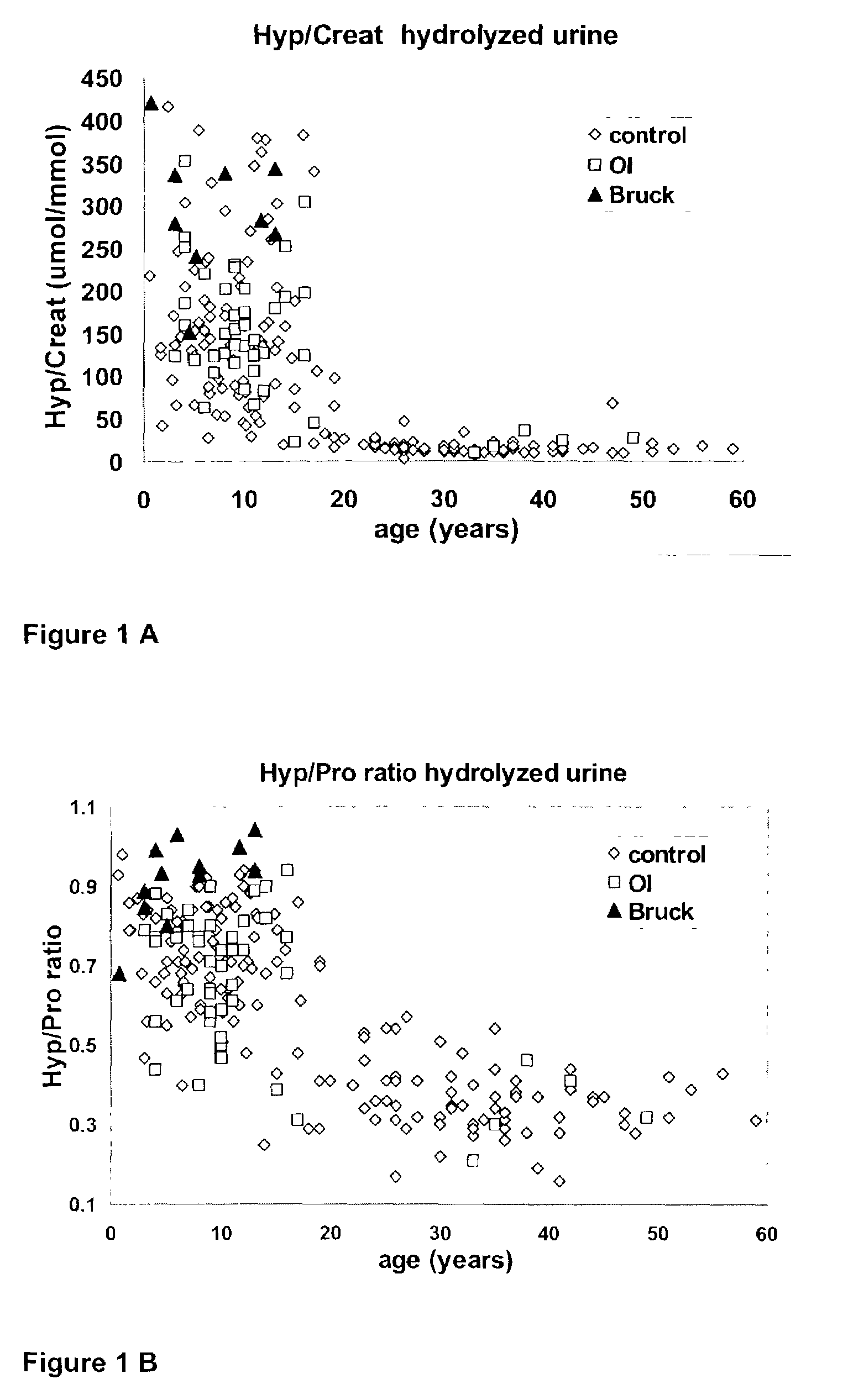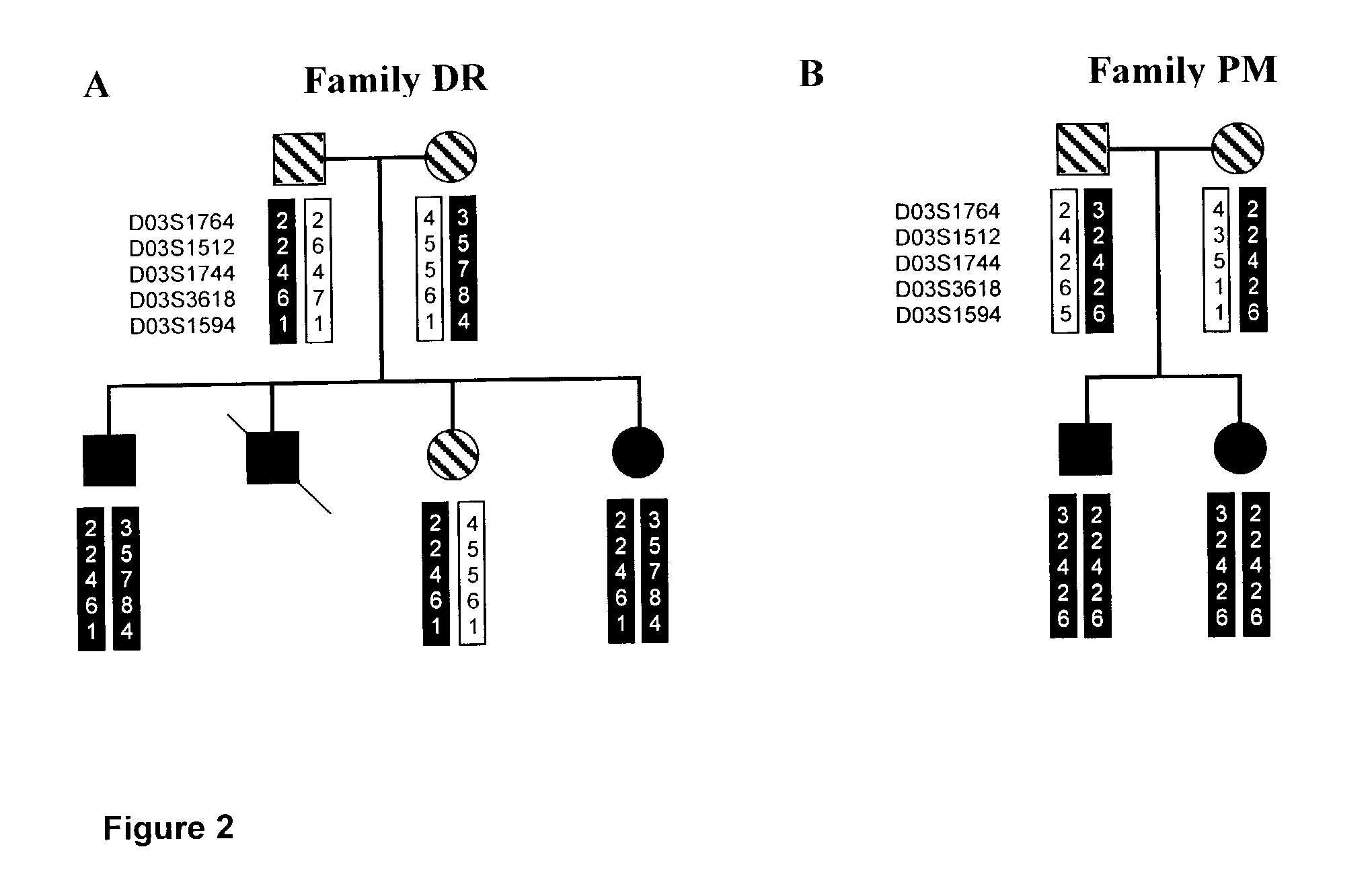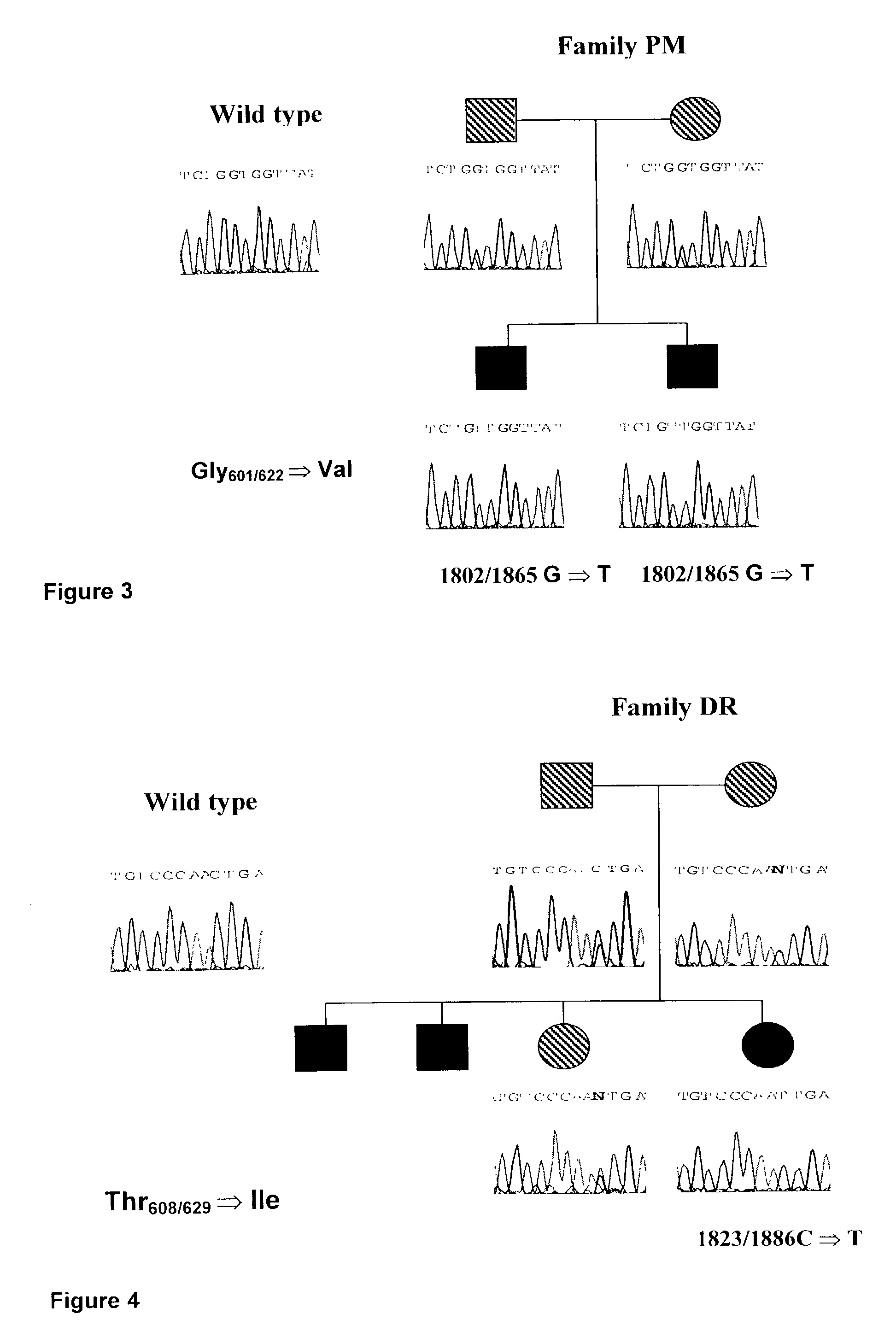Modification of collagenous materials and medical treatment, diagnosis and monitoring of fibrotic conditions
- Summary
- Abstract
- Description
- Claims
- Application Information
AI Technical Summary
Benefits of technology
Problems solved by technology
Method used
Image
Examples
example 1
Pepsin Digestion of Normal and Bruck Syndrome Bone Shows Differences in Collagen Degradation by Proteolytic Enzymes and Differences in Collagen Packing
[0091]Bruck syndrome and normal bone was demineralized at 4° C. with 0.5 M EDTA, 0.05 M Tris-HCI, pH 7.5 over 2 weeks. Demineralized Bruck syndrome and normal bone was incubated for 24 h at 4° C. with 0.5 M acetic acid (HAc) or with pepsin (enzyme:substrate ratio 1:10, w / w) in 0.5 M HAc. The solubilized collagen (present in the supernatant) was separated from the insoluble collagen matrix (containing the non-solubilized collagen) by means of centrifugation; both were hydrolyzed with 6 M HCI in Teflon sealed glass tubes (110° C., 20–24 h). The amount of the collagen-specific amino acid hydroxyproline (Hyp) was measured with reversed-phase high-performance liquid chromatography [R. A. Bank et al., 1997, Matrix Biol., 16: 233–243]. The amount of solubilized collagen was expressed as a percentage of total collagen using the equation Hypsu...
example 2
Hydroxyproline Measurements in Urine Revealed That in Vivo Degradation of Bone Collagen is Enhanced in Bruck Syndrome
[0094]Urine samples (500 μl) were hydrolyzed in an oven (110° C.; 20–24 h) with 500 μl 12 M HCI in 5 ml Teflon sealed glass tubes. After drying (SpeedVac, Savant), the hydrolysates were dissolved in 1 ml water, and diluted 400 times in 0.1 M borate buffer pH 9.5. A 200 μl sample was mixed with 25 μl o-phthaldialdehyde (OPA) reagent (30 mg OPA +15 μl β-mercaptoethanol in 1 ml acetone) and reacted for 1 min at room temperature. The reaction mixture was mixed with 25 μl iodoacetamide (80 mg / ml acetone) and incubated at room temperature for at least 30 sec to remove excess β-mercaptoethanol. Subsequently, the secondary amino acids hydroxyproline (Hyp) and proline (Pro) were derivatized with 50 μl 6 mM 9-fluorenylmethyl chloroformate in acetone for 5 min at room temperature. Immediately thereafter, the sample was extracted twice with 700 μl diethyl ether to terminate the r...
example 3
Mutation Analysis of the PLOD2 Gene of Bruck Syndrome Patients Reveals that PLOD2 is Telopeptide Lysyl Hydroxylase
[0096]Amplification of the individual exons of PLOD2 was carried out with the primers presented in table 1. The PCR mix consisted of 5 μl TaKaRa 10× PCR buffer, 8 μl of mixture containing the four dNTPs (2.5 mM each), 1 μl forward primer and 1 μl reverse primer (50 μM each), 0.5 μl TaKaRa La Taq polymerase (50 U / μl), 2.5 μl DNA (200 ng / μl), 5 μl DMSO and 27 μl H2O. Thirtyfive cycles of amplification were carried out. Each cycle consisted of: 1 min denaturation at 94° C., 0.5–1.5 min at 56–60° C. for annealing (see table exact condition per primer set) and 1 min at 68° C. for the extension. The amplified exons were purified with the Qiagen PCR purification kit; 10 ng of each exon was subjected to a cycle sequence PCR using the ABI PRISM™ BigDye Termination Cycle Sequencing Ready Reaction Kit and analyzed by means of capillary electrophoresis using the ABI PRISM™ 310 appar...
PUM
| Property | Measurement | Unit |
|---|---|---|
| Fraction | aaaaa | aaaaa |
| Annealing point | aaaaa | aaaaa |
| Annealing point | aaaaa | aaaaa |
Abstract
Description
Claims
Application Information
 Login to View More
Login to View More - R&D
- Intellectual Property
- Life Sciences
- Materials
- Tech Scout
- Unparalleled Data Quality
- Higher Quality Content
- 60% Fewer Hallucinations
Browse by: Latest US Patents, China's latest patents, Technical Efficacy Thesaurus, Application Domain, Technology Topic, Popular Technical Reports.
© 2025 PatSnap. All rights reserved.Legal|Privacy policy|Modern Slavery Act Transparency Statement|Sitemap|About US| Contact US: help@patsnap.com



